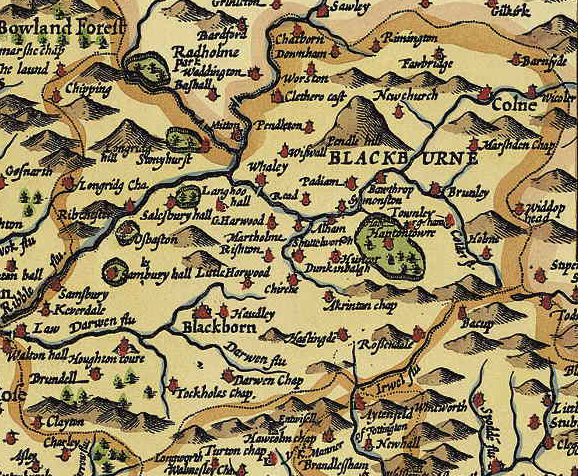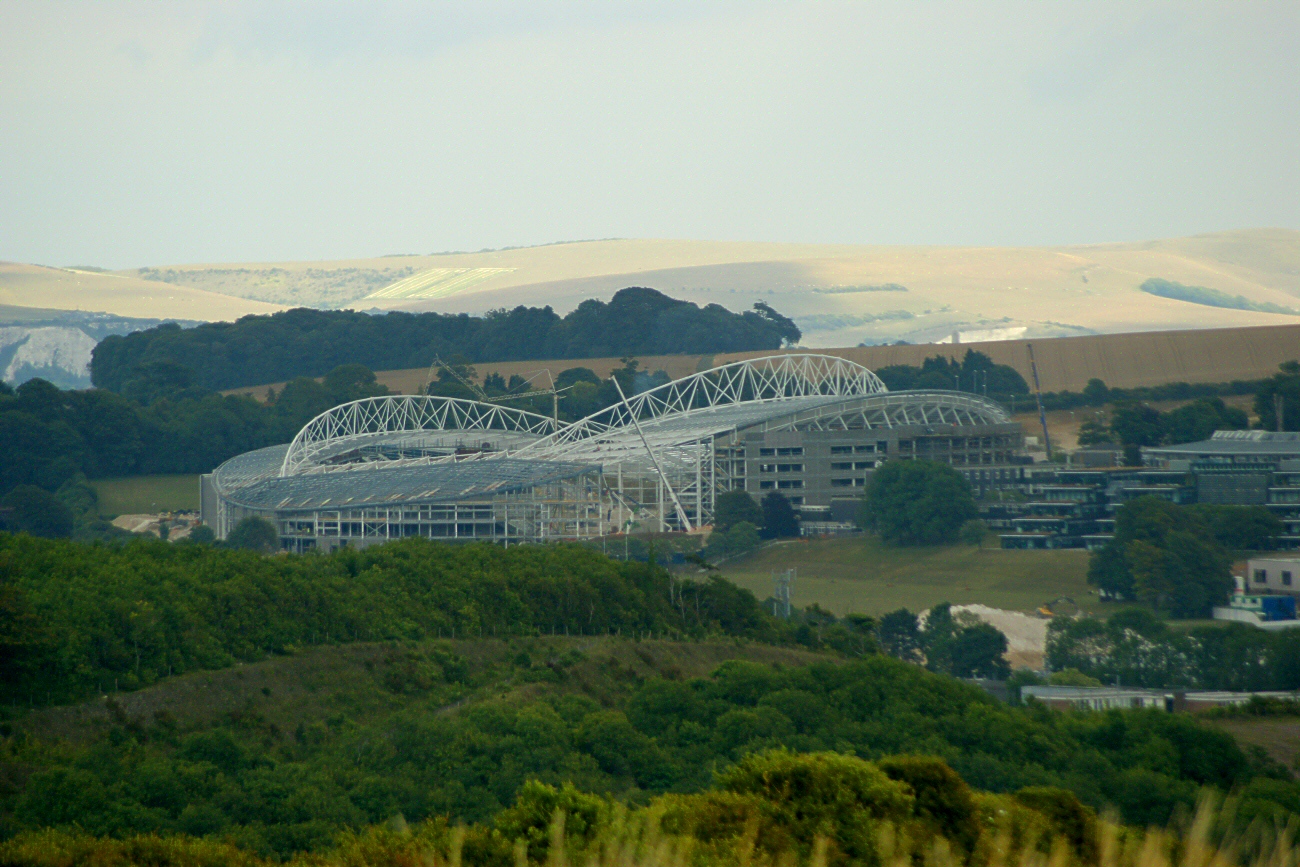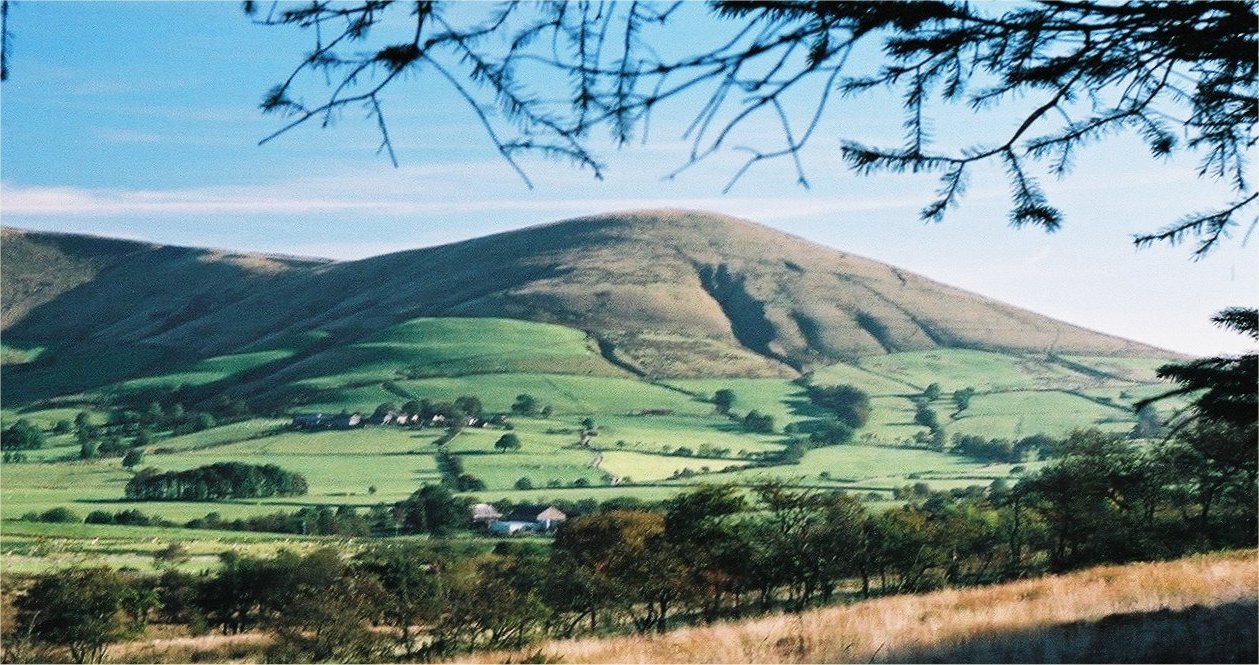|
Pendleton, Lancashire
Pendleton is a small village and civil parish in Ribble Valley, within the county of Lancashire, England. It is close to the towns of Whalley, Lancashire, Whalley and Clitheroe. The parish lies on the north west side of Pendle Hill below the Nick o' Pendle. The village is just off the A59 road, A59, Liverpool to York main road, since the construction of the Clitheroe by-pass. Older roads through the parish include one from Clitheroe to Whalley which passes through the Standen area and another to Burnley which passes Pendleton Hall. Pendleton Brook runs down the centre of Main Street in the village. The village pub, the Swan with Two Necks, won the Campaign for Real Ale's (CAMRA) national Pub of the Year award in 2013. According to the 2001 census, the parish had a population of 203; however, the United Kingdom Census 2011 grouped the parish with Mearley and Worston (2001 pop. 25 and 76), giving a total of 349. The parish adjoins the other Ribble Valley parishes of Clitheroe, ... [...More Info...] [...Related Items...] OR: [Wikipedia] [Google] [Baidu] |
Ribble Valley
Ribble Valley is a local government district with borough status in Lancashire, England. Its council is based in Clitheroe, the largest town. The borough also includes the town of Longridge and numerous villages and surrounding rural areas. It is named after the River Ribble. Much of the district lies within the Forest of Bowland, a designated Area of Outstanding Natural Beauty. The neighbouring districts are Pendle, Burnley, Hyndburn, Blackburn with Darwen, South Ribble, Preston, Wyre, Lancaster and North Yorkshire. History The district was created on 1 April 1974 under the Local Government Act 1972, covering the whole area of four former districts and parts of another three, which were abolished at the same time: * Blackburn Rural District (north of Arley Brook, rest went to Blackburn) * Bowland Rural District * Burnley Rural District (parishes of Read and Sabden only, rest split between Burnley, Hyndburn and Pendle) * Clitheroe Municipal Borough * Clitheroe Rur ... [...More Info...] [...Related Items...] OR: [Wikipedia] [Google] [Baidu] |
Sabden
Sabden is a village and civil parish in the Ribble Valley, Lancashire, England. Sabden is located south of Pendle Hill, in a valley about three miles north west of Padiham. The parish covers , of which is occupied by the village. It lies in the Forest of Pendle section of the Forest of Bowland Area of Outstanding Natural Beauty. Toponymy Sabden is believed to have been derived from Old English , meaning "spruce valley." The name occurs as early as 1296 as "Sapedene;" however, this likely refers to Sabden Hall, located in the hamlet now known as Sabden Fold in Goldshaw Booth. History In 1387 Sapenden Haye (Sabden Hey) was demised by John of Gaunt to Thomas de Radcliffe. A bridge is mentioned near here in 1425. Both Yates' 1786 and Greenwood's 1818 maps of Lancashire mark two settlements at this site: Hey-houfes and Sabden Bridge. It was known as Sabden Hey and Heyhouses when it developed into a hamlet. The Starkie family of Huntroyde Hall near Padiham were landowners in ... [...More Info...] [...Related Items...] OR: [Wikipedia] [Google] [Baidu] |
William Harrison Ainsworth
William Harrison Ainsworth (4 February 18053 January 1882) was an English historical novelist born at King Street in Manchester. He trained as a lawyer, but the legal profession held no attraction for him. While completing his legal studies in London he met the publisher John Ebers, at that time manager of the King's Theatre, Haymarket. Ebers introduced Ainsworth to literary and dramatic circles, and to his daughter, who became Ainsworth's wife. Ainsworth briefly tried the publishing business, but soon gave it up and devoted himself to journalism and literature. His first success as a writer came with '' Rookwood'' in 1834, which features Dick Turpin as its leading character. A stream of 39 novels followed, the last of which appeared in 1881. Ainsworth died in Reigate on 3 January 1882, and was buried in Kensal Green Cemetery. Biography Early life Ainsworth was born on 4 February 1805 in the family house at 21 King Street, Manchester, to Thomas Ainsworth, a promine ... [...More Info...] [...Related Items...] OR: [Wikipedia] [Google] [Baidu] |
Pendle Witches
The trials of the Pendle witches in 1612 are among the most famous witch trials in English history, and some of the best recorded of the 17th century. The twelve accused lived in the area surrounding Pendle Hill in Lancashire, and were charged with the murders of ten people by the use of witchcraft. All but two were tried at Lancaster Assizes on 18–19 August 1612, along with the Samlesbury witches and others, in a series of trials that have become known as the Lancashire witch trials. One was tried at York Assizes on 27 July 1612, and another died in prison. Of the eleven who went to trial – nine women and two men – ten were found guilty and executed by hanging; one was found not guilty. The official publication of the proceedings by the clerk to the court, Thomas Potts, in his '' The Wonderfull Discoverie of Witches in the Countie of Lancaster'', and the number of witches hanged together – nine at Lancaster and one at York – make the trials unusual for England at ... [...More Info...] [...Related Items...] OR: [Wikipedia] [Google] [Baidu] |
Thomas Jollie
Thomas Jollie (1629–1703) was an English Dissenter, a minister ejected from the Church of England for his beliefs. Biography Thomas Jollie was born at Droylsden, near Manchester, on 14 September 1629, and baptised on 29 September at Gorton Chapel, then in the parish of Manchester. His father, Major James Jollie (1610–1666), was Cromwell’s provost-marshal general of the forces in Lancashire (1642–7), and was nominated (2 October 1646) an elder for Gorton in the first or Manchester classis in the presbyterial arrangement for Lancashire, but did not act, being an independent. He married Elizabeth Hall (d February 1689, aged 92), widow, of Droylsden, whose daughter by the former marriage was wife of Adam Martindale. Thomas Jollie entered Trinity College, Cambridge, in 1645, two years earlier than Oliver Heywood, with whom he formed a lifelong friendship. He does not seem to have graduated. First ministry Having received a unanimous call from the parishioners of Altham, a ... [...More Info...] [...Related Items...] OR: [Wikipedia] [Google] [Baidu] |
Nonconformist (Protestantism)
Nonconformists are Protestant Christians who do not "conform" to the governance and usages of the established church in England, and in Wales until 1914, the Church of England. Use of the term ''Nonconformist'' in England and Wales was precipitated by the Restoration of the Stuart monarchy in 1660, when the Act of Uniformity 1662 renewed opposition to reforms within the established church. By the late 19th century the term specifically included other Reformed Christians ( English Presbyterians and Congregationalists), plus the Baptists, Brethren, Methodists, and Quakers. English Dissenters, such as the Puritans, who violated the Act of Uniformity 1558 – typically by practising radical, sometimes separatist, dissent – were retrospectively labelled as Nonconformists. In Ireland, the comparable term until the Church of Ireland's disestablishment in 1869 was Dissenter (the term earlier used in England), commonly referring to Irish Presbyterians who dissented from th ... [...More Info...] [...Related Items...] OR: [Wikipedia] [Google] [Baidu] |
Hide (unit)
The hide was an English unit of land measurement originally intended to represent the amount of land sufficient to support a household. The Anglo-Saxon hide commonly appeared as of arable land, but it probably represented a much smaller holding before 1066. It was a measure of value and tax assessment, including obligations for food-rent ('), maintenance and repair of bridges and fortifications, manpower for the army ('), and (eventually) the ' land tax. The hide's method of calculation is now obscure: different properties with the same hidage could vary greatly in extent even in the same county. Following the Norman Conquest of England, the hidage assessments were recorded in the Domesday Book of 1086, and there was a tendency for land producing £1 of income per year to be assessed at 1 hide. The Norman kings continued to use the unit for their tax assessments until the end of the 12th century. The hide was divided into four yardlands or virgates. It was hence nominally ... [...More Info...] [...Related Items...] OR: [Wikipedia] [Google] [Baidu] |
Edward The Confessor
Edward the Confessor ( 1003 – 5 January 1066) was King of England from 1042 until his death in 1066. He was the last reigning monarch of the House of Wessex. Edward was the son of Æthelred the Unready and Emma of Normandy. He succeeded Cnut the Great's son – and his own half-brother – Harthacnut. He restored the rule of the House of Wessex after the period of Danish rule since Cnut conquered England in 1016. When Edward died in 1066, he was succeeded by his wife's brother Harold Godwinson, who was defeated and killed in the same year at the Battle of Hastings by the Normans under William the Conqueror. Edward's young great-nephew Edgar Ætheling of the House of Wessex was proclaimed king after the Battle of Hastings, but was never crowned and was peacefully deposed after about eight weeks. Historians disagree about Edward's fairly long 24-year reign. His nickname reflects the traditional image of him as unworldly and pious. Confessor of the Faith, Confess ... [...More Info...] [...Related Items...] OR: [Wikipedia] [Google] [Baidu] |
Domesday
Domesday Book ( ; the Middle English spelling of "Doomsday Book") is a manuscript record of the Great Survey of much of England and parts of Wales completed in 1086 at the behest of William the Conqueror. The manuscript was originally known by the Latin name , meaning "Book of Winchester", where it was originally kept in the royal treasury. The ''Anglo-Saxon Chronicle'' states that in 1085 the king sent his agents to survey every shire in England, to list his holdings and dues owed to him. Written in Medieval Latin, it was highly abbreviated and included some vernacular native terms without Latin equivalents. The survey's main purpose was to record the annual value of every piece of landed property to its lord, and the resources in land, labour force, and livestock from which the value derived. The name "Domesday Book" came into use in the 12th century. Richard FitzNeal wrote in the ( 1179) that the book was so called because its decisions were unalterable, like those of the ... [...More Info...] [...Related Items...] OR: [Wikipedia] [Google] [Baidu] |
Blackburn Hundred
Blackburn Hundred (also known as Blackburnshire) is a historic sub-division of the county of Lancashire, in northern England. Its chief town was Blackburn, in the southwest of the hundred. It covered an area similar to modern East Lancashire, including the current districts of Ribble Valley (excluding the part north of the River Ribble and east of the Hodder, which was then in Yorkshire), Pendle (excluding West Craven, also in Yorkshire), Burnley, Rossendale, Hyndburn, Blackburn with Darwen, and South Ribble (east from Walton-le-dale and Lostock Hall). Much of the area is hilly, bordering on the Pennines, with Pendle Hill in the midst of it, and was historically sparsely populated. It included several important royal forests. In the 18th century several towns in the area became industrialized and densely populated, including Blackburn itself, and Burnley. Early history The shire probably originated as a county of the Kingdom of Northumbria, but was much fought over. In the ... [...More Info...] [...Related Items...] OR: [Wikipedia] [Google] [Baidu] |
Area Of Outstanding Natural Beauty
An Area of Outstanding Natural Beauty (AONB; , AHNE) is one of 46 areas of countryside in England, Wales, or Northern Ireland that has been designated for conservation due to its significant landscape value. Since 2023, the areas in England and Wales have also adopted the name National Landscape (). Areas are designated in recognition of their national importance by the relevant public body: Natural England, Natural Resources Wales, and the Northern Ireland Environment Agency respectively. On 22 November 2023, following a review, the AONBs in England and Wales adopted the National Landscapes name, and are in the process of rebranding. AONBs in Northern Ireland did not rename. The name "area of outstanding natural beauty" is still the designated legal term. In place of the term AONB, Scotland uses the similar national scenic area (NSA) designation. Areas of Outstanding Natural Beauty enjoy levels of protection from development similar to those of UK national parks, but unli ... [...More Info...] [...Related Items...] OR: [Wikipedia] [Google] [Baidu] |
Forest Of Bowland
The Forest of Bowland, also known as the Bowland Fells and formerly the Chase of Bowland, is an area of gritstone fells, deep valleys and peat moorland, mostly in north-east Lancashire, England, with a small part in North Yorkshire (however roughly half of the area falls into the area of the historic West Riding of Yorkshire). It is a western outlier of the Pennines. The Forest of Bowland was designated an Area of Outstanding Natural Beauty (AONB) in 1964. The AONB also includes a detached part known as the Forest of Pendle separated from the main part by the River Ribble, Ribble Valley, and anciently a royal forest with its own separate history. One of the best-known features of the area is Pendle Hill, which lies in Pendle Forest. There are more than 500 listed buildings and 18 scheduled monuments within the AONB. The Trough of Bowland is a pass connecting the valley of the River Wyre, Marshaw Wyre with that of Langden Brook, and dividing the upland core of Bowland into two ... [...More Info...] [...Related Items...] OR: [Wikipedia] [Google] [Baidu] |






